
4 Quality Education (45)
Ensure inclusive and equitable quality education and promote lifelong learning opportunities for all
David Etnier, a legendary chronicler and advocate for lesser-known regional fish, dies at 84
Written by Ben Pounds![David Etnier]() Courtesy JR Shute
Courtesy JR Shute
Etnier left behind a legacy of research and ambitious students
KNOXVILLE — Dr. David Etnier, a professor at the University of Tennessee internationally known for his research on freshwater fishes and caddis flies, died May 17 at the age of 84.
Etnier, known as “Ets” to his students, joined the UT faculty in 1965 and retired in 2001. Three aquatic insect species he helped discover are named after him, and those are just three of the more than 410 insect species he helped discover.
Udderly amazing: University of Tennessee to unveil robotic cow-milker
WALLAND — The University of Tennessee Institute of Agriculture will host a demonstration of its new robotic milking technology at the UT AgResearch and Education Center’s Little River Unit in Blount County. The new system, developed by the Lely Corporation in the Netherlands, allows for the cows to be automatically milked at their own will in a stress-free environment. The demonstration is set for 10 a.m. May 2 and will include remarks from prominent university and community leaders.
The cows are trained to walk up to the robotic system, where each animal will be recognized by a sensor on its collar. The system then knows how much feed to give the cow while she’s being milked, based on historical data. The cow is free to eat, drink and rest while being milked, and in an area where there’s less cattle traffic. About 120 dairy cows can be milked and individual records kept through two robotic systems in a relatively short amount of time.
“The mission of UT AgResearch is to conduct leading-edge projects to serve the evolving needs of the agriculture and forestry industry in Tennessee and beyond,” said Hongwei Xin, dean of UT AgResearch.
“The introduction of milking robots into our existing traditional dairy production system at the Little River dairy facility allows our researchers to find answers to questions ranging from interactions between the animals and robots, impact on the animal’s production performance, and labor savings and profitability. The robotic milking system is part of the UT Precision Livestock Farming (PLF) initiative that aims to improve production efficiency and food supply chain robustness through enhanced animal welfare. UTIA is poised to be the leader in PLF in the region, the nation and the world.”
— University of Tennessee Institute of Agriculture
Earth Day is every day, but especially this Saturday
Written by JJ Stambaugh This photo of the Southern Appalachians was taken from 30,000 feet. “Notice how the clouds are parallel with the ridges below them. Wind near the surface blowing up the western slopes forms waves in the atmosphere. At the crest of the wave, over the ridge tops, the air has cooled sufficiently to condense into clouds. As this air descends toward the wave trough, it becomes slightly warmer and drier, inhibiting condensation.” Seth Adams via NASA
This photo of the Southern Appalachians was taken from 30,000 feet. “Notice how the clouds are parallel with the ridges below them. Wind near the surface blowing up the western slopes forms waves in the atmosphere. At the crest of the wave, over the ridge tops, the air has cooled sufficiently to condense into clouds. As this air descends toward the wave trough, it becomes slightly warmer and drier, inhibiting condensation.” Seth Adams via NASA
Earth Day activities have cooled in Knoxville over the decades. The planet has not.
KNOXVILLE — It’s been 52 years since the modern environmental movement was born on what is now known around the world as Earth Day.
Now reckoned to be the world’s largest secular observance, Earth Day is the climax of Earth Week (April 16 to 22), which brings together an estimated billion people around the globe working to change human behavior and push for pro-environment economic and legislative action. This year’s theme is “Invest in the planet.”
Events marking Earth Day in Knoxville tend to vary in size and tone from year-to-year, with 2023 providing environmentally minded residents with a number of ways to celebrate Mother Earth.
Perhaps the most memorable of those years was the very first one, when one of the most important voices in the burgeoning environmental movement spoke on the University of Tennessee campus.
Jane Jacobs, who is now recognized as “the godmother of the New Urbanism movement,” gave a lecture to a crowd of nearly 200 people on the topic of “Man and His Environment” at the Alumni Memorial Hall, according to Jack Neely, who heads the Knoxville History Project.
- earth day 2023
- knoxville earth day event
- how can i celebrate earth day
- oak ridge earth day
- south knoxville community cleanup
- keep knoxville beautiful
- department of energy
- jack neely
- knoxville history project
- jj stambaugh
- jane jacobs
- new urbanism
- dogwood arts festival
- University of Tennessee
- marisa tomei
- citizen jane
- habitat for humanity
- restore
- karm
- lyrids meteor shower
- nasa
- southern appalachia
- oak ridge national laboratory
Hellbent: Conservation Fisheries saves what we don’t typically see
Written by JJ Stambaugh Conservation Fisheries Executive Director Bo Baxter (second from right) leads young students in an inventory of Little River fish. The “Stream School” collaboration with Little River Watershed Association gets kids in creeks and rivers. Michael Mollish /Tennessee Valley Authority
Conservation Fisheries Executive Director Bo Baxter (second from right) leads young students in an inventory of Little River fish. The “Stream School” collaboration with Little River Watershed Association gets kids in creeks and rivers. Michael Mollish /Tennessee Valley Authority
‘It’s very good for the soul.’ Bo Baxter and Conservation Fisheries focus underwater to save our Southern fishes.
This is the latest installment of an occasional series, Hellbent, profiling citizens and organizations who work to preserve and improve the Southern Appalachian environment.
KNOXVILLE — For more than 35 years, an obscure nonprofit headquartered here has grown into one of the most quietly successful champions of ecology and environmental restoration in the Eastern United States.
Conservation Fisheries, which occupies a 5,000-square foot facility near the Pellissippi State University campus on Division Street, has spent nearly four decades restoring native fish populations to numerous waterways damaged years ago by misguided governmental policies.
In fact, the mid-20th century saw wildlife officials frequently exterminating key aquatic species to make way for game fish like trout.
“It was bad science, but it was the best they had at the time,” said Conservation Fisheries Executive Director Bo Baxter. “A lot of the central concepts of ecology, like food webs and communities, were not developed back then.”
Knox County mayor honors women leaders in STEAM all month
KNOXVILLE — Knox County Mayor Glenn Jacobs is observing Women’s History Month throughout March by sharing videos each Wednesday highlighting time spent in different Knox County Schools’ Science, Technology, Engineering, Art and Math (STEAM) classrooms taught by female teachers.
The March 15 video features a visit with South Doyle High School STEM/Computer Science and 2022 KCS Secondary Teacher of the Year Katie DeVinney who was teaching a class on the principles of advanced manufacturing and practical design.
“I hope out of courses like this, that young women are able to see the opportunities available in sectors of the economy like advanced manufacturing and hopefully pursue those,” Jacobs said in a press release.
DeVinney is a 10-year educator who began her career as a foreign language instructor but was inspired by her husband who started the Robotics program at South Doyle High School, to switch paths.
“I just love it. It’s so much fun to see the excitement in kids when they get to take something that they designed on this computer and then hold it in the real world. It’s the coolest process I have ever seen so that’s kind of why I do it.” DeVinney said.
Mayor Jacobs said celebrating women in STEAM is important for young girls because it shows them that women can succeed in technical fields — industry typically driven by men.
The mayor has already shared his visit with Hardin Valley Elementary STEM Educators Jessica Everitt and Jana Yra and his visit with West Valley Middle science teacher Bethany Saunders.
Later this month, he will share visits with Gibbs Middle School Art Teacher Dorothy Verbick and STEM Teacher Lauren Downs; as well as Karns Middle School Math Teacher Rebecca Layton.
— Knox County Mayors Office
(Quick update): Orange STEM: UT links East Tennessee students with Science, Technical, Engineering and Math studies
Written by JJ Stambaugh High school students from across East Tennessee got to check out the latest career offerings in fields like robotics and virtual reality at the Jan. 21 Big Orange STEM event. JJ Stambaugh/Hellbender Press
High school students from across East Tennessee got to check out the latest career offerings in fields like robotics and virtual reality at the Jan. 21 Big Orange STEM event. JJ Stambaugh/Hellbender Press
The TN Lunabotics, science and sustainability get together at BOSS event
Updated March 2023 with notes from a reader:
My name is Allison, and I am a teaching volunteer with Students For Research. I am reaching out because our class found your website very useful while researching STEM resources that can help students discover the various aspects of science, technology, engineering and math. Many of our current students are interested in learning more about how topics associated with STEM work, especially in relation to online research, either for school or for their future careers. Your website ended up being featured by our students, so we wanted to notify you and say thank you!
As a part of the assignment, one of our students, Becky, did some research on her own time and found this informative page for more STEM using this resource. The team found it helpful as it provided guidance on how libraries can introduce children to STEM and continue to provide resources as they progress through their education.
I was hoping you would be able to include this resource on your website, even if it's only for a short time. I think your other visitors might find it helpful, and it also helps our group of students cite appropriate resources and stay engaged whenever outreach yields positive feedback everyone can see. Please let me know if you would be willing to add it so I can share the exciting news with Sophie and the rest of her fellow students. I appreciate your help!
KNOXVILLE — What do environmental, social and economic sustainability have in common?
There are numerous ways to answer that question, but for those who pay close attention to education or economics it’s an accepted fact that the future belongs to societies that invest heavily in STEM (Science, Technology, Engineering and Mathematics).
That’s why educators at all levels are pushing students towards those subjects at every opportunity, as was evidenced Jan. 21 at Big Orange STEM Saturday (BOSS) at the University of Tennessee.
About 150 high school students picked from communities across East Tennessee spent much of their Saturday at John C. Hodges Library, getting a first-hand taste of what awaits them should they choose to pursue careers in STEM through the UT system.
To save butterflies, plant a billboard on an island for life
Written by Ben Pounds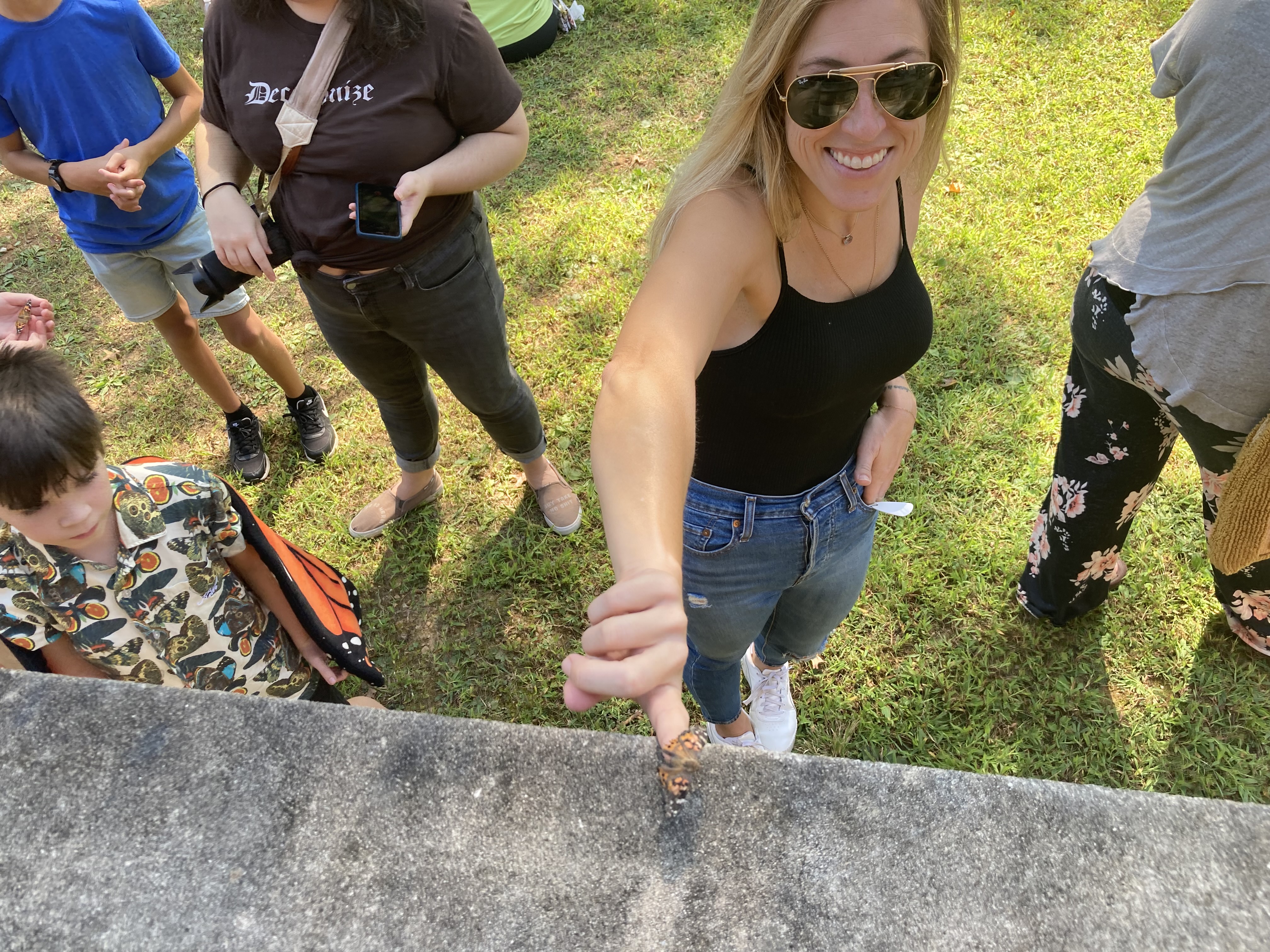 Kat Johnson meets a butterfly during a recent event at the University of Tennessee Arboretum in Oak Ridge. Ben Pounds/Hellbender Press
Kat Johnson meets a butterfly during a recent event at the University of Tennessee Arboretum in Oak Ridge. Ben Pounds/Hellbender Press
UT Arboretum event reminds us to love and care for the butterflies among us
OAK RIDGE — With an orange flutter, a cluster of painted lady butterflies took to the sky.
It was a timed release, coming toward the end of the seventh annual University of Tennessee Arboretum’s Butterfly Festival last month.
Earlier, other live painted lady butterflies were available to watch in mesh tents. Visitors got a chance to touch Madagascar hissing cockroaches and look at preserved insect collections with butterflies and other creatures from around the world. Children ran around the event with butterfly face paint, butterfly masks and butterfly wings. But the event was also a chance to buy butterfly-friendly plants and learn about butterflies and their relationships with other species.
- butterfly
- university of tennessee arboretum
- butterfly festival
- pollinator plant
- tennessee naturscapes
- michelle campanis
- stephen lynn bales
- georgeann eubanks
- family garden as butterfly habitat
- jerome grant
- migratory butterfly
- cosmopolitan butterfly
- butterfly garden
- painted lady butterfly
- zebra swallow butterfly
- tennessee state butterfly
- pawpaw
An under-appreciated Black scientist pioneered the modern study of bees and other insects
Written by Edward D. Melillo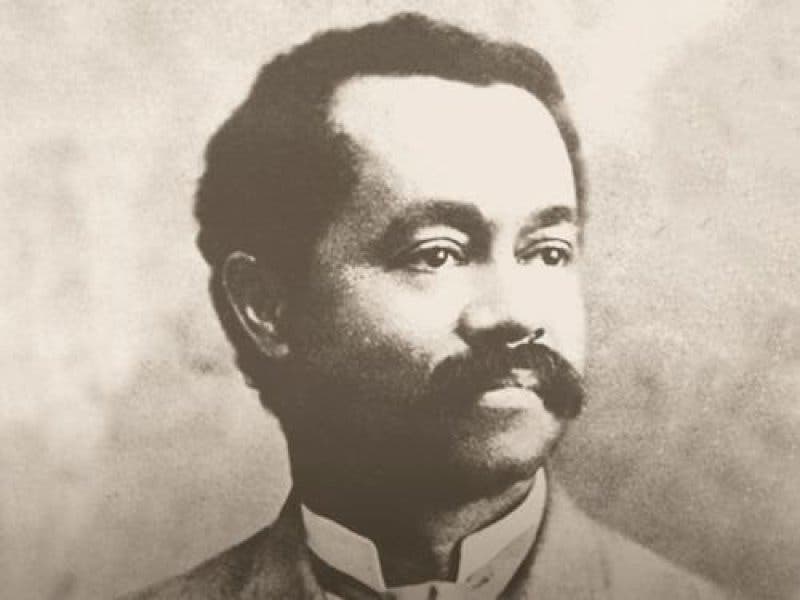 Zoologist Charles Henry Turner was the first scientist to prove certain insects could remember, learn and feel. Charles I. Abramson via The Conversation
Zoologist Charles Henry Turner was the first scientist to prove certain insects could remember, learn and feel. Charles I. Abramson via The Conversation
Charles Henry Turner concluded that bees can perceive time and develop new feeding habits in response
This story was originally published by The Conversation. Edward D. Melillo is a professor of history and environmental studies at Amherst College.
On a crisp autumn morning in 1908, an elegantly dressed African American man strode back and forth among the pin oaks, magnolias and silver maples of O’Fallon Park in St. Louis, Missouri. After placing a dozen dishes filled with strawberry jam atop several picnic tables, biologist Charles Henry Turner retreated to a nearby bench, notebook and pencil at the ready.
Following a midmorning break for tea and toast (topped with strawberry jam, of course), Turner returned to his outdoor experiment. At noon and again at dusk, he placed jam-filled dishes on the park tables. As he discovered, honeybees (Apis mellifera) were reliable breakfast, lunch and dinner visitors to the sugary buffet. After a few days, Turner stopped offering jam at midday and sunset, and presented the treats only at dawn. Initially, the bees continued appearing at all three times. Soon, however, they changed their arrival patterns, visiting the picnic tables only in the mornings.
Tennessee Aquarium diversifies its scientific assets
Written by Casey Phillips Jim Hill Fellow for Conservation Breelyn Bigbee holds a viewing window with a logperch in Long Swamp Creek while conducting fieldwork in search of bridled darters near Jasper, Georgia. Tennessee Aquarium
Jim Hill Fellow for Conservation Breelyn Bigbee holds a viewing window with a logperch in Long Swamp Creek while conducting fieldwork in search of bridled darters near Jasper, Georgia. Tennessee Aquarium
Tennessee Aquarium fellowships bring minorities into the science space
CHATTANOOGA — Never let it be said that all summer jobs are created equal.
Squatting on his heels to dangle the flexible hose of an environmental DNA pump into a briskly flowing North Georgia stream, the last few weeks have been anything but ordinary for Spencer Trimpe. With the pump’s droning motor steadily collecting a sample of water to filter out genetic traces of the stream’s inhabitants, he doesn’t bother holding back a smile.
A lanky junior biology major from Thomas More University, Trimpe is one of two students selected as part of the Tennessee Aquarium’s George Benz Aquatic Ecology Fellowship. Instead of manning a cash register or waiting tables this summer, he’s assisting freshwater scientists from the Tennessee Aquarium Conservation Institute with a variety of research projects.
In throwback to early naturalist techniques, The Big Camera helps us picture plants under the sun
Written by Ben Pounds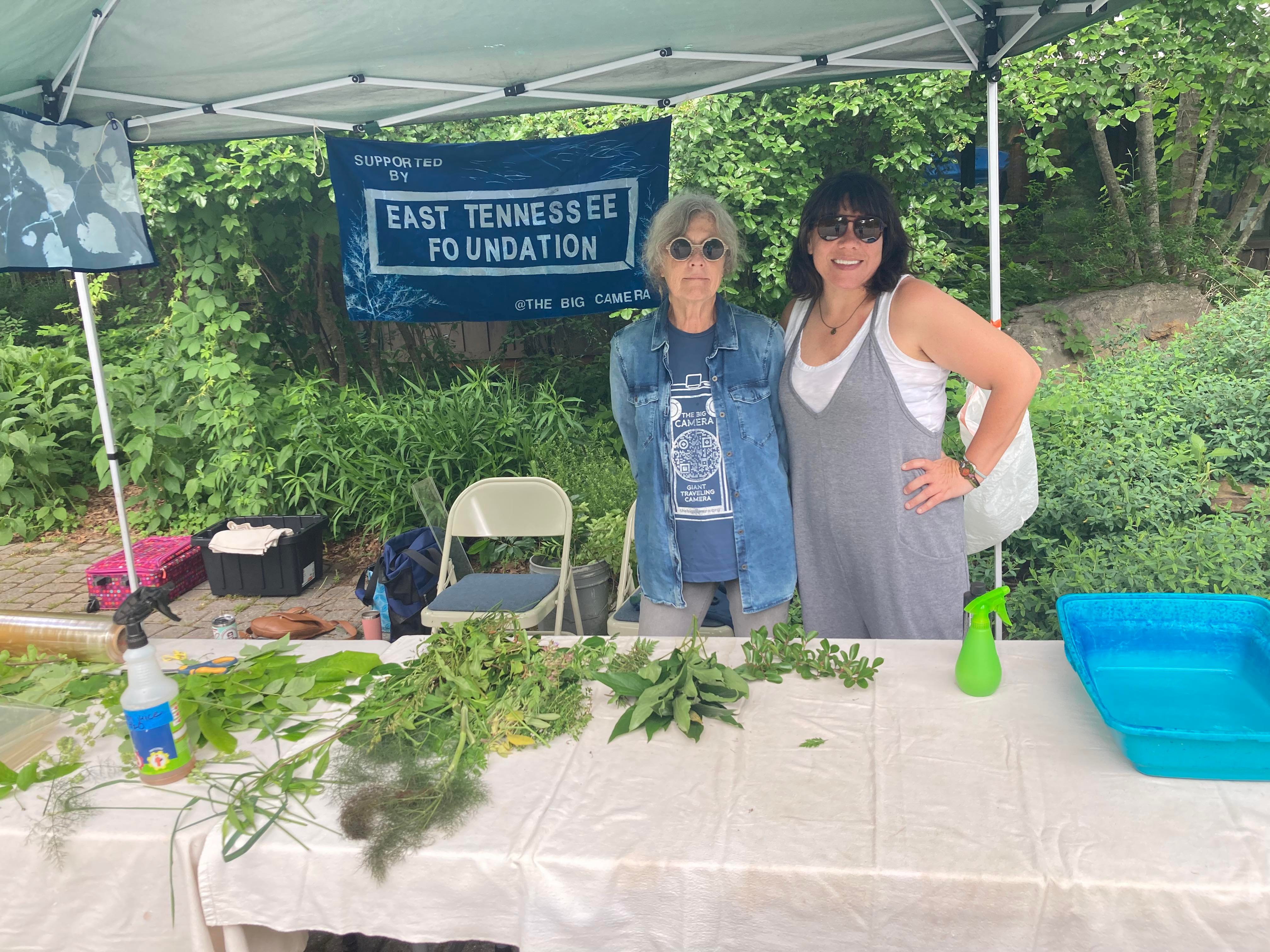 Donna Moore and Anna Lawrence are pictured at The Big Camera event in May at Ijams Nature Center in South Knoxville. Ben Pounds/Hellbender Press
Donna Moore and Anna Lawrence are pictured at The Big Camera event in May at Ijams Nature Center in South Knoxville. Ben Pounds/Hellbender Press
Lessons in early and enduring photo techniques are an organic way to spread the arts and cultivate love of nature
KNOXVILLE — Donna Moore and Anna Lawrence showed people how to take photos with the sun.
The method, demonstrated this spring at Ijams Nature Center, involved putting one or more leaves on photo paper and spraying it with two sprays. One spray contained lemon and water. The other contained water with vinegar.
Children then placed these leaves on wet photo paper in the sun. The sun’s light gives a permanent impression of the leaf on the paper.
More...
Knoxville kids go beast mode at new natural playscape
Written by Cindy Hassil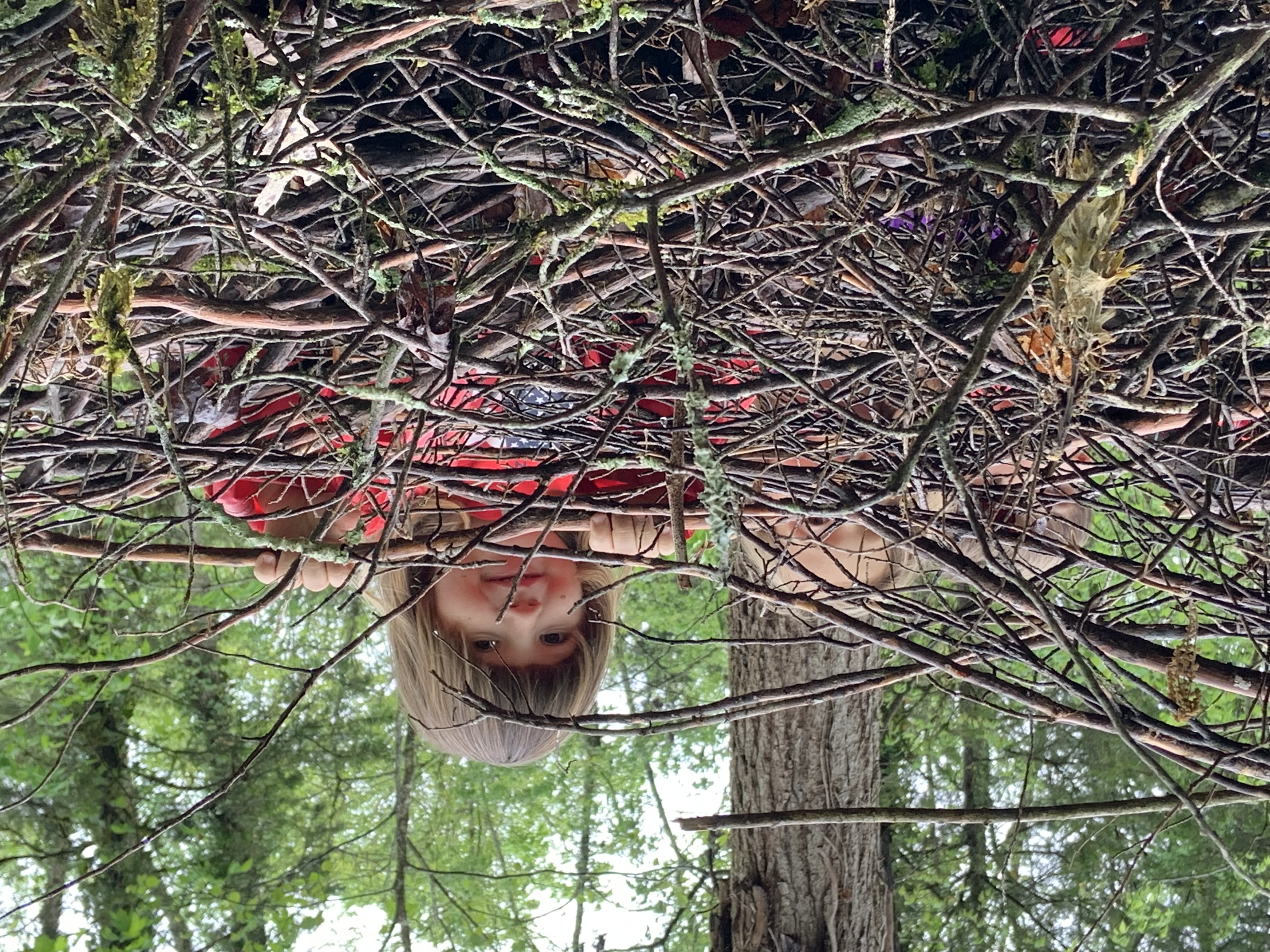 A child defends an elaborate stick fort at Ijams Natural Playscape, which opened this week at the South Knoxville nature center. Ijams Nature Center
A child defends an elaborate stick fort at Ijams Natural Playscape, which opened this week at the South Knoxville nature center. Ijams Nature Center
New Ijams playground reconnects kids with neighborhood woods, forts and creeks of yore
KNOXVILLE — Ijams Nature Center officially opened a portal into pure childhood beast mode this week.
The Ijams Nature Playscape at Grayson Subaru Preserve is specifically designed for young children to play in a creek, climb hills, dig, build, crawl and engage with nature in an organic, unstructured way. The new space features a large nest, tunnels, log steps and different rooms to play in.
“For generations, many of us had the opportunity to roam and play in the woods, empty lots and fields that surrounded our homes and neighborhoods,” Ijams Executive Director Amber Parker said. “We remember the freedom we had to use our imagination, test ourselves and become a part of the natural landscape, at least until we were called home for dinner.”
- ijams nature center
- ijams educational program
- ijams natural playscape
- kid at ijams
- ijams activity
- cindy hassil
- grayson at ijams
- knoxville outdoor activities for kid
- is knoxville sustainable
- knoxville good place for kid
- childhood outdoor education
- south knoxville
- amber parker
- grayson subaru knoxville
- grayson nature
- is grayson sustainable?
- ijams history
- playgrounds knoxville
- playgrounds near knoxville downtown
- natural playground
- importance of children playing in nature
- nature daycamp knoxville
Ijams Nature Center honors deep roots with expansion dedication
Written by Cindy Hassil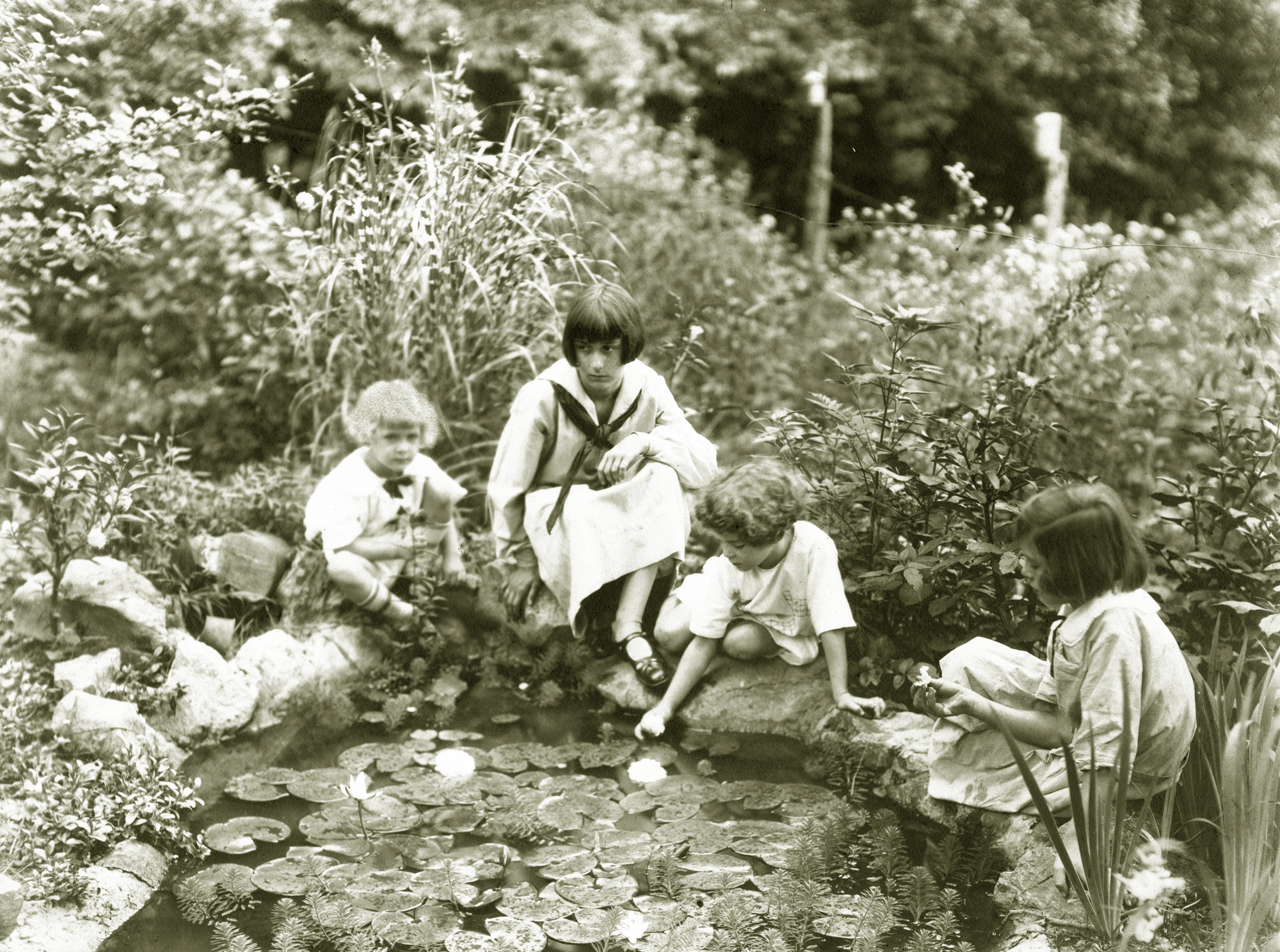
Help give thanks across history to founders of the South Knoxville nature center and celebrate the addition of 3 acres
Cindy Hassil is a writer for Ijams Nature Center.
KNOXVILLE When H.P. and Alice Ijams purchased 20 acres of land along the Tennessee River in 1910, they couldn’t have known their family would still be contributing to the legacy that would become the 318-acre nonprofit Ijams Nature Center more than a century later.
Ijams Nature Center will celebrate the contributions of the Ijams family and dedicate three acres of land recently donated to the nature center by H.P. and Alice’s granddaughter, Martha Kern, at 10 a.m. Thursday, April 28. The public is invited.
Empty halls, full hearts: Farragut students and teachers adapted with aplomb to pandemic challenge
Written by Ivy Zhang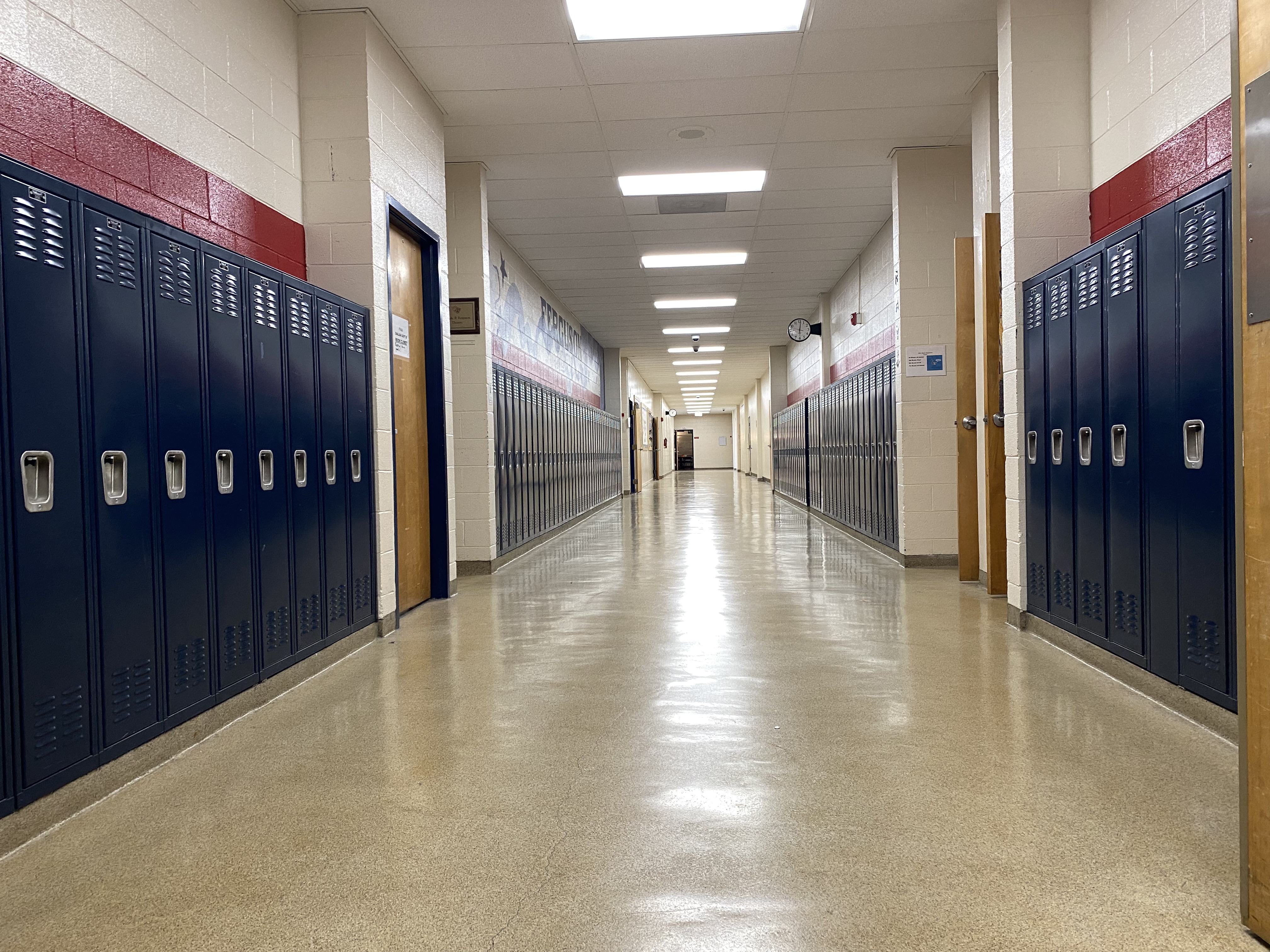
Despite COVID restrictions, Farragut High students still sought their shine
Hellbender Press intern Ivy Zhang is a junior at Farragut High School. She plans a career in journalism and digital media.
KNOXVILLE — For the 2020-2021 school year, Knox County Schools provided two choices for families: virtual learning or in-person schooling. Many students chose to do virtual school and participated in less extracurricular activities.
Students felt isolated. School clubs halted for the entire school year. The disruption caused by the novel coronavirus (COVID-19) affected the whole world, as well as local communities.
Farragut High School, No. 2 in Knox County rankings, is a great example of how the COVID-19 pandemic affected students.
- farragut high school
- farragut high school science
- ivy zhang
- hellbender press intern
- covid impact on school
- covid19 in knoxville
- covid19 precaution
- student response to covid
- covid remote learning problem
- covid 19 learning success
- farragut ap class
- farragut calculus
- farragut chess club
- virtual class
- virtual learning
- teaching challenge
The days the Earth stood still (Part 2): South Knoxville’s Ijams Nature Center weathered Covid with grit, gifts and gratitude. Naturally.
Written by Thomas Fraser Members of a Covid-era outdoor education class at Ijams Nature Center net insects. The South Knoxville nature center weathered the Covid-19 pandemic with donations, federal loan guarantees and common-sense maneuvering, like moving all educational programming outside. Photos courtesy Ijams Nature Center.
Members of a Covid-era outdoor education class at Ijams Nature Center net insects. The South Knoxville nature center weathered the Covid-19 pandemic with donations, federal loan guarantees and common-sense maneuvering, like moving all educational programming outside. Photos courtesy Ijams Nature Center.
Ijams posted record visitation during pandemic even as resources were challenged
(This is the second in an occasional Hellbender Press series about the effects of the Covid-19 pandemic on the natural world. Here's the first installment about air quality improvements in the Smokies.)
Individuals and organizations can learn a lot from a pandemic.
You up your technology game. You innovate and run harder and get leaner. You realize the importance of face time (the real face time).
You learn the power of allies and those who really love you.
And in the case of Ijams Nature Center in South Knoxville, you learn just how much people need and value the natural world and the outdoors, especially in times of acute stress and uncertainty.
Ijams played host to a record number of visitors in 2020; there was no usual winter slowdown. Parking lots were full virtually every day during the height of the pandemic that claimed the lives of at least 600,000 people in the U.S. That visitation trend has continued at Ijams, with the coronavirus somewhat comfortably in the rear-view mirror.
An estimated 160,000 people visit the popular nature center annually, but there’s no exact count. Officials said the 2020 visitation substantially surpassed that number, and they plan a visitation study because a very “porous border” prevents an accurate count.
“The one great thing that has come out of Covid, is that people have recognized the importance of nature in their lives; they’ve recognized it as a place for solace, a place to get out and be safe and feel comfortable,” said Ijams Nature Center Executive Director Amber Parker.
“The sheer mass number of people coming were new to Ijams, or maybe come once or twice coming multiple times a week,” said Ijams Development Director Cindy Hassil.
“We were so excited to be this refuge for everyone,” Parker added.
The two women spoke on a sunny spring afternoon on the fetching expanse of stone terrace behind the visitors center in the shade of tulip poplars, red buds and dogwoods. Cardinals chirped and early 17-year cicadas throbbed behind a natural green curtain.
